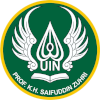Kehidupan Kaum Minoritas Muslim Hui dan Uyghur di Negeri Tirai Bambu
DOI:
https://doi.org/10.24090/jsij.v1i2.6851Keywords:
Minority, Islam, Hui Muslims, Uyghur Muslims, Bamboo Curtain CountryAbstract
Being a minority is not an easy thing, it is also experienced by the people of the season. Muslims in China often experience discrimination, especially for Uyghur Muslim communities, Although Muslims in China are not only Uyghurs but the government often discriminates against Uyghurs, they are often referred to as Theorists because of their Turkish ancestors. This study of researchers wants to examine how the lives of minorities for Hui Muslims and Uyghurs live in the bamboo curtain country, as well as how the history of the entry of Islam in China and how they gained their identity. This type of research is qualitative research. The method used is a literature study taken from several journals as well as articles and videos on youtube. The purpose of this research is that the wider community can understand the related muslim life in China.References
Affairs, M. M. (2017). Sino-Muslim Relations : The Han , the Hui , and the Uyghurs. March. https://doi.org/10.1080/13602004.2017.1294373
Akbar,Hikmatul (2013). Integrasi Etnis Muslim Hui Di China, Yogyakarta,Graha Ilmu Akhtar, E. (2016). Marginalization of Hui Muslims in China : A. 16(4).
Aly Masyhar. (2018). Bulan Sabit di Negeri Komunis Tirai Bambu : Sebuah Perjuangan Identitas Umat Minoritas, Shahih,Vol.3 No 2 LP2M IAIN Surakarta
Asian, C., & Tengah, A. (2021). Perkembangan pendidikan islam di cina. 7, 50–61.
Asmanidar.(2015). Potret Tamaddun Islam Di Negeri “Tirai Bambu” ( Mulai dari Masa Dinasti Tang Hingga Republik Rakyat China). Jurnal Ilmiah Islam Fitura, Vol.14 No 2
Diterima : November 2019. Disetujui : Agustus 2019. Diterbitkan : November 2019. (2019). 25(2),
–399.
Indainanto, Y. I. (2020). Relasi Politik , Bullying dan Etika Mengenai Isu “ Muslim Uighur ” di Media sosial. 4(1). https://doi.org/10.30596/interaksi.v4i1.4014
Indonesia, R. (1999). Presiden republik indonesia.
Masdi Widada, Dwi. ( 2016). Sejarah Peradaban Islam di China dan Nilai-Nilai Pendidikan Islam Dalam Novel Assalamualaikum Bejing. Jurnal Pendidikan Agama Islam,Vol.3 No.1
Nizmi, Y. E. (2019). Populasi , One Child Policy dan Reformasi Cina. 3(1), 80–101. Relations, I. (2020). No Title. 6, 578–588.
Riyadi Terre, Eddie. Posisi Minoritas dalam Pluralisme: Sebuah Diskursus Politik Pembebasan.Lembaga Studi & Advokasi Masyarakat
Rong,Gui., Hacer Zekiye Gonul, Zhang Xiaoyan. (2016). Current Issues in Islam Hui Muslims In China. Leuven University Press
Shimbo, A. (2017). The lifestyle transformation of Hui Muslim women in China : a comparison of modern and Islamic education The lifestyle transformation of Hui Muslim women in China : a comparison of modern and Islamic education. Journal of Contemporary East Asia Studies, 6(1), 42–61. https://doi.org/10.1080/24761028.2017.1312756
Shorey, A. (2013). The Hui and the Uyghurs : A Comparison of Relationships with the Chinese State.
Siyoto, Sandu., Ali Sodik. (2015).Dasar Metodologi Penelitian. Yogyakarta, Literasi Media Publishing
Studi, P., Ilmu, T., & Sosial, P. (2020). Journal of Social Science Teaching, Vol. 4 No. 1 Tahun 2020 Program Studi Tadris Ilmu Pengetahuan Sosial Institut Agama Islam Negeri Kudus. 4(1).
Wang, W., Zhou, S., Fan, C. C., & Al, W. E. T. (2002). in Beijing. 2, 104–122.
Downloads
Published
How to Cite
Issue
Section
License
Copyright (c) 2022 Muh. Hanif, Amanatul Maula

This work is licensed under a Creative Commons Attribution 4.0 International License.








